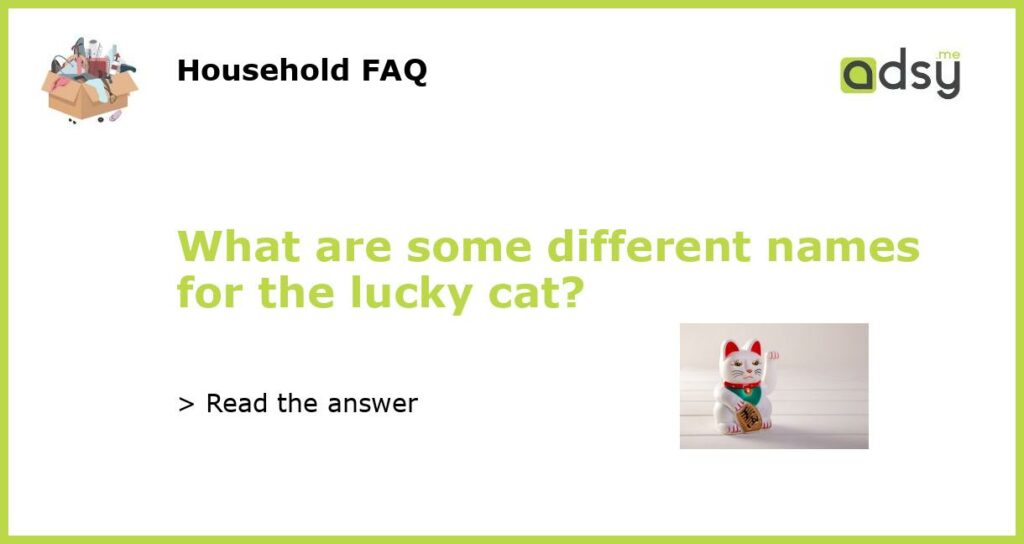The Lucky Cat: Known By Many Names
Many people may know the Lucky Cat as a popular Japanese figurine with one paw raised, believed to bring good fortune and wealth. However, this iconic statue has gone by many different names throughout history and across cultures. In this article, we will explore some of the various names that the Lucky Cat has been known as.
Maneki-Neko: The Original Name
The most well-known name for the Lucky Cat is probably “Maneki-Neko”, which is the Japanese term for this popular figurine. “Maneki” means “beckoning” or “inviting”, while “neko” translates to “cat”. The origin of this name comes from the legend of a cat who saved a Japanese lord from a lightning bolt by beckoning him inside a temple with its raised paw. From here, the Maneki-Neko became a symbol of good luck, particularly for businesses.
Zhaocai Mao: The Chinese Version
While the Lucky Cat may have originated in Japan, it has also become popular in other parts of Asia – particularly China. In Chinese culture, the Lucky Cat is known as “Zhaocai Mao”, which translates to “wealth-inviting cat”. This name emphasizes the Lucky Cat’s association with good fortune in regards to wealth and money. Many Chinese businesses will display Zhaocai Mao statues in their shops or restaurants to attract success and prosperity.
Welcoming Cat: The English Translation
In English-speaking countries, the Lucky Cat is often simply referred to as the “Welcoming Cat”. This name highlights the figurine’s role in welcoming visitors and inviting good fortune into a space. Here, the Lucky Cat is more closely associated with hospitality and welcoming gestures than with specific ideas of wealth or fortune.
Beckoning Cat: Another Simple Translation
Another common name for the Lucky Cat is the “Beckoning Cat”. This name is similar to “Welcoming Cat” but places more emphasis on the idea of beckoning or inviting good fortune into a space. In some cases, “Beckoning Cat” can also be used as a more direct translation of the original Japanese term “Maneki-Neko”.






